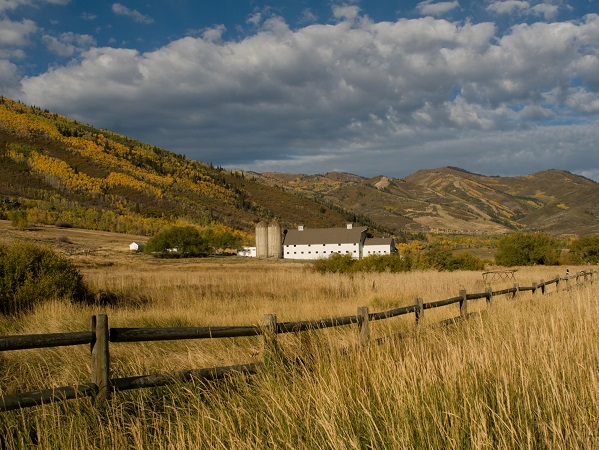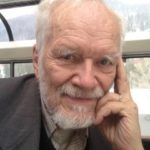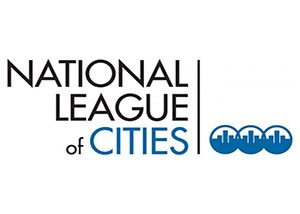Apply now to join our next cohort of Community Science Fellows and Community Leads!

Photo Courtesy of Darcy Glenn
Initial Project: Park City has ambitious goals to be a carbon neutral community by 2030. The overarching strategies to achieve the goal are: 1) energy efficiency, 2) electrification, 3) 100% renewable electricity, and 4)carbon sequestration. Biochar has been seen to effectively improve soil productivity and carbon sequestration. This project is to identify the most appropriate methodologies to apply biochar to Park City’s soils, and how to quantify the carbon sequestered through amending soils with biochar to increase our carbon sink. Ultimately, Park City would like to use these soil amendment and quantification or carbon sequestration methodologies against community carbon emissions to help balance out the community carbon footprint.
The overarching objectives outlined for this project included:
Results: Via partnerships established between Park City led by Celia Peterson, the following activities were executed to work toward Park City’s overall climate goals, specifically focusing on biochar:
Future work planned involves developing a demonstration area and education materials so that Park City may serve as a model where biochar can be used as a strategy toward meeting aggressive climate goals.
Project Outputs:
Outputs include:
Although wildfires are a healthy part of many ecosystems in the Intermountain West, the risk from catastrophic wildfires continues to increase in communities like Park City, Utah, east of Salt Lake City. Bordered to the west by the Wasatch mountain range, Park City is known and prized for its outdoor recreation, with almost 10,000 acres of open space that provides access to ski slopes and miles of mountain biking trails. Years of fire suppression across the landscape coupled with a hotter and drier climate, as well as the continued development of subdivisions along the wildland urban interface present the challenge of trying to protect communities from fire danger in a way that does not deplete stored carbon from the landscape.
Park City has one of the most ambitious climate goals in North America, with a goal to be net-zero in carbon emissions and running off 100% renewable energy by 2022 for its municipal operations and 2030 community-wide. In addition to mitigating greenhouse gas emissions, carbon sequestration and regenerative management of soils are key strategies to become a carbon neutral community.
Park City has been developing a biochar program to increase the amount of carbon stored in soils and vegetation. Biochar is a charcoal-like material that is rich in carbon. It is created by the burning of brush and wood debris in the absence of oxygen (pyrolysis), and can be used in carbon sequestration efforts as well as improving overall soil health.
Park City was among eight communities to recently receive a 2019 Leader in Community Resilience Program award from the National League of Cities (NLC). The award will support the city’s work in developing a biochar program. Thus far, Park City’s biochar program has consisted of incorporating biochar into soils during community tree planting events sponsored by the City in the summers of 2017 and 2018. In 2019 the program was expanded to create biochar from waste wood collected to maintain defensible space1 around built structures. During May of 2019 a public demonstration was held to teach the public about how biochar is made, where it can be used on the landscape, and how it can reduce fire danger locally. Approximately 64 cubic feet of biochar was created. An additional demonstration event is planned for October 2019.
The Sustainability Department at Park City sees two main objectives for a Thriving Earth Exchange project. First, the group would like to develop a methodology for measuring soil carbon, as well as soil productivity and water retention over time, in particular to track change as biochar is applied to Park City’s open spaces. The second major objective is to gain an understanding of how much carbon can be sequestered from turning excess wildfire fuels into biochar and applying to open spaces, and if different application methods are more effective at carbon sequestration.
This will require on-the-ground field measurements collected across the span of two years to cover two growing seasons. They wish to share the results of this project with other communities across the West facing similar wildfire risks.
1Wikipedia page on defensible space https://en.wikipedia.org/wiki/Defensible_space_(fire_control)
Project Outputs:
Outputs include:
The geographic scale for this biochar project will be restricted to a couple of acres. Biochar will be reapplied to the location from which it was removed and to other open spaces. Park City’s NLC grant covers the production of the biochar.
Celia Peterson, Park City Municipal – Client & City Liaison
Celia Peterson is the Environmental Sustainability Project Manager for Park City and serves as the main point of contact for the project. She is supported by Luke Cartin, Environmental Sustainability Manager.
Ronal Larson, Larson Consulting – Project Manager

Dr. Ronal Larson
Dr. Larson is a retired former Professor (Georgia Tech) and Federal Lab employee (Principal Scientist at what is now the National Renewable Energy Laboratory in Golden Colorado). He is a past chair of the board of the American Solar Energy Society. He has been working with biochar since 1995, serving as the first coordinator of the “stoves” (re char-making stoves) and “biochar” internet lists. He helped found the USBI (United States Biochar Initiative) and is on its Board (and is its Treasurer). He serves on the technical advisory committee of IBI, the International Biochar Initiative.
Darren McAvoy, USU – Lead on Utah state support
Darren McAvoy is an Extension Assistant Professor of Forestry at Utah State University. He is now finishing up his PhD there. For a more complete description of his areas of interest – see https://forestry.usu.edu/contact-us/darren-j-mcavoy
Debby Dumroese, USDA – Co-lead on soil measurements
Dr. Dumroese is a Research Soil Scientist for the U. S. ForestService (Moscow, Idaho). Several of her soil measurement technical papers are a key part of the team’s support of Park City. See https://www.fs.usda.gov/rmrs/people/ddumroese.
Jim Archuleta, USDA – Co-lead on soil measurements
Jim Archuleta has the title of Pacific Northwest Region Biomass and Wood Innovation Coordinator, working out of the USFS office in Portland Oregon. Pacific Northwest Region Biomass and Wood Innovation Coordinator. His connection to biochar is lengthy – with emphasis on products. See more on Jim at https://www.fs.usda.gov/faces-of-the-forest-service/meet-james-archuleta.
Tom Miles. Miles Associates – Lead on similar projects globally
Tom Miles heads his own (third generation) technical advisory firm in Portland Oregon specializing in handling biomass materials. He has recently stepped down as head of the main biochar group – IBI (International Biochar Initiative). He continues as the head of USBI, daughter organization of IBI. See more at http://trmiles.com/.
Kelpie Wilson, Wilson Associates – Lead on low-cost char production
Kelpie Wilson, heads Wilson Associates – which is primarily working on biochar from an off-grid location in Oregon. Author of numerous publications on both production and use of biochar – especially working with forest biomass. Also on the USBI board. See more at https://wilsonbiochar.com/

(c) 2024 Thriving Earth Exchange